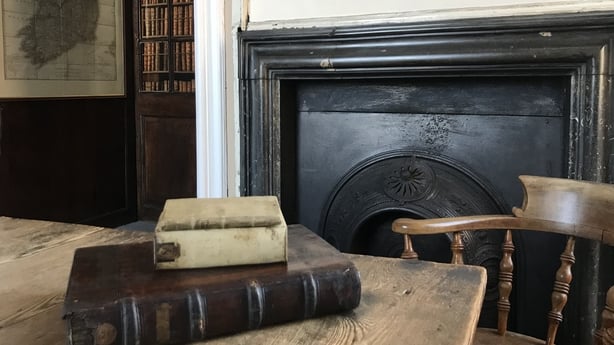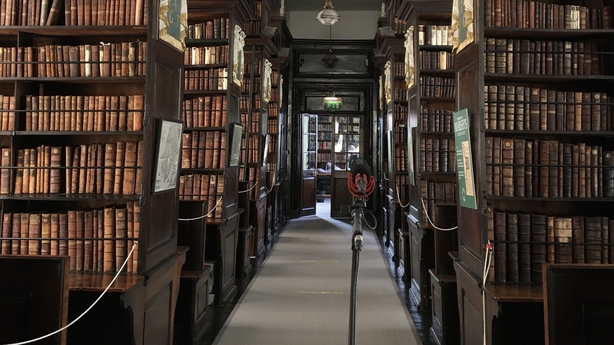Olga Taranova from Marsh's Library writes about a fascinating discovery in the first public library in Ireland, how the 300-year-old works of one library trustee continue to offer comfort to a new generation of travellers.
In March 2022 the bookcases that had been covering the old fireplace in Marsh's library for the previous 40 years were removed. It was a known fact that there was a fireplace behind them – in a magazine from the 1820s it was claimed that Johnathan Swift enjoyed sitting by the fire in the Old Reading Room while gazing out of the window at St Patrick’s Cathedral. It was a pleasant surprise, however, that the original mantlepiece was still intact.

Swift was one of the first readers in the first public library in Ireland. In 1707 when it officially opened he turned 40 years of age. Having just received a Doctor of Divinity degree from Trinity College, he lived between London and Dublin, becoming increasingly active politically and well known as a writer and satirist. He wrote his famous Gulliver's Travels (1726), while serving as the dean of St Patrick’s Cathedral, living next door to Marsh’s Library and being one of its trustees.

The fictionalised travel diaries style of writing was not ground-breaking or original at the time. In fact, Marsh’s Library has several rare books of this genre, such as Edward Webbe’s tales of being enslaved in Crimea and meeting unicorns on his journeys, printed in 1590, or George Psalmanaazaar’s completely made up account of all aspects of life on the island of Formosa (now Taiwan). Description of Formosa was published in 1704 and caused quite a scandal in literary circles that certainly attracted Swift’s attention. He even mentioned the disgraced author with the impossible surname in A Modest Proposal (1729). The copy of Description of Formosa in Marsh’s Library was so popular that it was one of the first books stolen and had to be replaced later, but it was certainly there during Swift's years.
The librarian who would have given Swift the books was a French doctor Elias Bouhéreau, who fled persecution in France and was a refugee in Ireland. One of those religious clashes that Swift later labelled in Gulliver’s Travels as the Egg Wars, a deep ideological conflict over which end to crack an egg. Bouhéreau was the first person hired by the library and was given accommodation on the ground floor of the premises. His family came with him as well, with an exception of one of his small daughters who was left behind and was never able to reunite with her family in Dublin. The kind of tragic events one would not expect to take place in Europe in the 21st century.
Listen: A Place Of Stories - The Lyric Feature visits Marsh's Library
Yet, about the same time we uncovered Swift's favourite fireplace we began welcoming the first of many visitors from Ukraine. Of all the stories that the library can tell of its famous books and readers they seem to enjoy hearing anecdotes about Jonathan Swift the most. Gulliver’s Travels was always part of the international literature canon in the Soviet Union and has remained so on all its former territories after the Union’s collapse.
I read it growing up in Soviet Tajikistan, just a few years before I had to flee my own catastrophe which Wikipedia now calls the Tajikistani Civil War (1992-1997). Everyone read it in primary school and knows what to expect if you happen to find yourself in unknown lands very far away from home, what unbelievable creatures you might meet there and how to make the best of the most harrowing and absurd circumstances, all while everyone thinks you are the one who is weird.
The book, which is almost 300 years old, still manages to provide much needed escape and comfort, especially if one decides to revisit its pages by the fireplace in the Old Reading room of Marsh’s Library.
Find out more about Marsh's Library here.

